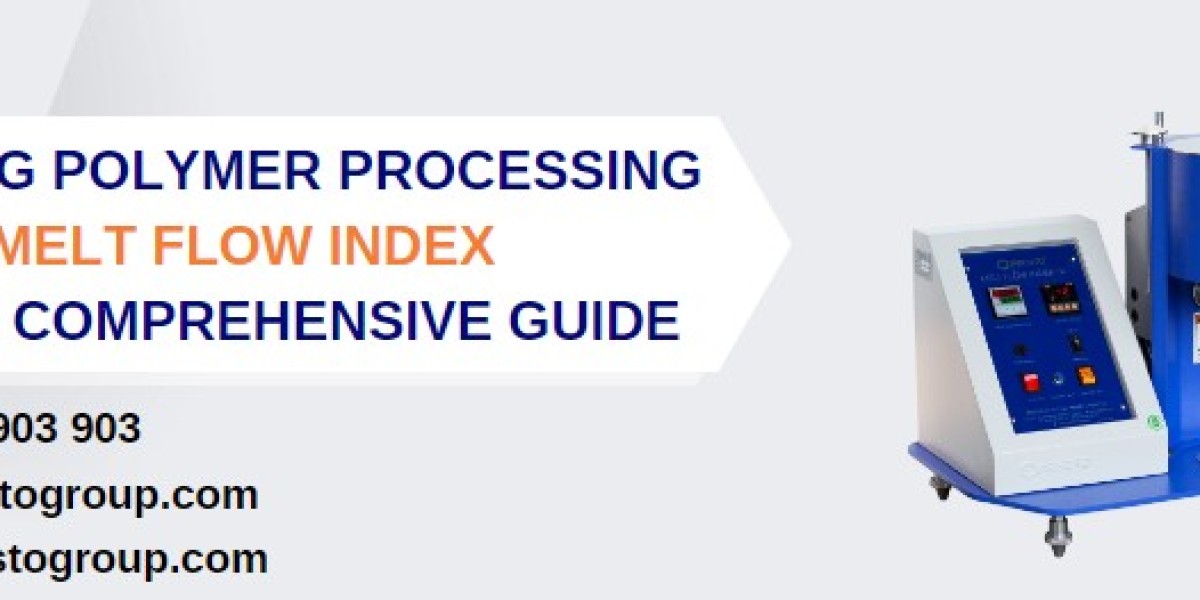Introduction:
Melt Flow Index (MFI) testing plays a crucial role in assessing the flow properties of polymers. To conduct this test accurately and consistently, a specialized instrument called a Melt Flow Index Tester is used. This article provides an overview of the Melt Flow Index Tester, its functions, and its significance in polymer analysis.
Definition and Purpose:
A Melt Flow Index Tester is a laboratory instrument designed to measure the Melt Flow Index of a polymer. It determines the polymer’s flow characteristics by measuring the rate at which it flows through a standardized capillary under specific temperature and load conditions. The Melt Flow Index value obtained from the test helps in evaluating the processability and quality of polymers.
Components and Operation:
A typical Plastic melt flow index tester consists of several key components, including a heated barrel, a piston or plunger, a die with a standardized capillary, and a timing mechanism. The instrument is operated by loading a specified amount of polymer into the barrel, which is then heated to a predetermined temperature. The piston applies a constant load on the molten polymer, forcing it to flow through the capillary. The time taken for a specific amount of polymer to extrude through the capillary is recorded, and the Melt Flow Index is calculated based on this measurement.
Importance in Polymer Analysis:
The melt flow index holds significant importance in polymer analysis for the following reasons:
- Processability Assessment: The MFI value helps determine how easily a polymer can be processed in manufacturing processes such as injection molding or extrusion. Polymers with higher MFI values generally exhibit better flow properties, indicating smoother processing and improved productivity.
- Quality Control: MFI testing serves as a quality control tool to ensure consistency in polymer production. By monitoring the MFI values, manufacturers can verify that the polymer batches meet the required specifications, preventing potential issues in downstream applications.
- Material Selection: MFI values assist in selecting the appropriate polymer grade for specific applications. Different applications may require polymers with different flow properties, and the MFI value provides guidance in choosing the most suitable material for a particular process or end-use.
- Research and Development: MFI testing is also valuable in research and development of new polymers. It helps in understanding the flow behavior and processing characteristics of novel materials, enabling scientists to optimize formulations and improve overall product performance.
Technical specifications of a melt flow index tester can vary depending on the specific model and manufacturer. However, here are some common technical specifications that are typically associated with these instruments:
- Temperature Range: The Melt Flow Index Tester usually has a temperature control system capable of maintaining a predetermined temperature range, typically between room temperature and several hundred degrees Celsius. The temperature can be adjusted based on the specific requirements of the test method being followed.
- Load Range: The instrument applies a specific load to the molten polymer during the test. The load range can vary, but it is commonly between 2.16 kg (4.76 lbs) and 21.6 kg (47.62 lbs). The load is selected based on the polymer being tested and the applicable testing standards.
- Capillary Dimensions: The Melt Flow Index Tester includes a capillary through which the molten polymer flows. The dimensions of the capillary are standardized and specified by testing standards, such as ASTM D1238 or ISO 1133. The most common capillary dimensions are a length of 8 mm and an inner diameter of 2.095 mm.
- Timing Mechanism: The instrument is equipped with a timing mechanism that accurately measures the time it takes for a specific amount of polymer to flow through the capillary. This timing mechanism typically has a resolution of 0.1 seconds.
- Display and Controls: Melt Flow Index Testers usually feature a digital display that shows the test parameters and test results, including the Melt Flow Index value. The controls allow users to input the desired test parameters, such as temperature and load, and initiate the test.
- Data Recording and Analysis: Some advanced models of Melt Flow Index Testers may have data recording and analysis capabilities. They can store test results, calculate average values, and provide graphical representations of the flow properties of different polymers.
- Power Requirements: Melt Flow Index Testers typically require an electrical power supply. The power requirements can vary, but they commonly operate on standard voltages such as 110V or 220V AC.
Read other blogs
Keep corrosion at bay with the industry leading Salt Spray Chamber
Perform accurate paper grammage testing with a grammage checking kit
It’s important to note that these specifications can vary between different models and manufacturers. When considering a specific Melt Flow Index Tester, Presto is the world class melt flow index tester manufacturer and documentation or specifications for precise details on the instrument’s technical specifications and capabilities. You can get the melt flow index tester price by presto stantest.
Conclusion:
The mfi tester is an essential instrument in polymer analysis, providing valuable insights into the flow properties of polymers. By measuring the MFI, this testing equipment aids in processability assessment, quality control, material selection, and research and development. Understanding the function and significance of the Melt Flow Index Tester contributes to better polymer processing and product development in various industries.



